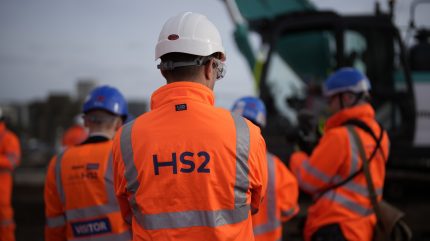
A report by the UK’s National Audit Office (NAO) has revealed the true cost of the cancellation of Phase 2 (the northern leg) of the High-Speed 2 project (HS2). The NAO is a government unit tasked with analysing UK government spending and efficiency.
The former government headed up by Rishi Sunak decided to scrap the second phase of the long-awaited national infrastructure project in October 2023. Not only did this disappoint railway industry figures, but the decision to make the announcement at the Conservative Party’s national conference in Manchester (where Phase 2 was planned to terminate) was seen as a disrespectful move by politicians and the public alike.
The damning NAO report found preliminary construction of the line’s supporting infrastructure had been started, including more than 1,0000 boreholes already drilled and environmental works.
Because the work had begun, not only in plans but on the ground, the cessation of these works is likely to take up to three years and cost the UK taxpayer an additional £100m ($130m).
“HS2 Ltd has set up a project for the closedown and remediation works which, although focused on Phase 2a, will also include remediation of the Phase 2b boreholes. DfT expects HS2 Ltd will complete the remediation works by summer 2027 and estimates this will cost up to £100 million (in 2024 prices),” the NAO stated.
A full costing of the plan changes and Phase 2 scrapping will only be made public in the HS2 Ltd 2023-24 annual financial report, which is expected in August 2024.
One reason the cost is so large is the remediation work needed. As per its contracts, HS2 is required to leave the land it will no longer use in a similarly good condition to how it was found. This means refilling boreholes and restoring natural landscapes.
Along with the reversal of works already completed, the government will need to analyse the 17km2 of land bought under compulsory purchase orders to make way for the rail line.
This cost £592m ($764.5m) and it is unclear how much money the Department for Transport and HS2 could recoup for the land if resold.
The report noted that: “HS2 Ltd has identified 179 parcels of land (covering around 9 square kilometres) of Phase 2a agricultural land, across 63 farms, that could be suitable for offering for sale to previous owners.”
It is expected this process will take “several years” as much of the land will not be suitable for return to its previous owners. The NAO added that at the time of writing (June 2024) no HS2 land had been disposed of.
But it’s not just the cancelled Phase 2 costs that have spiralled. The “funding envelope” for Phase 1 was extended to £44.6bn ($57.5bn) in 2020, but by late 2023 it was already on track to exceed the increased funding by at least £6bn ($7.8bn).
The full cost could yet run to nearly £60bn.
Reduction in scope = reduction in impact
The key promise when former Prime Minister Sunak halved the high-speed rail link, along with cost-cutting, was that the project’s benefits could be achieved without the second leg. This argument is put to bed by the NAO in a single sentence.
“The scale of benefits that can be realised by the HS2 programme is reduced, as the majority of the original benefits were associated with the delivery of Phase 2,” it declared.
It was hoped the existing west coast line could be used almost entirely by freight providers, once the alternative high-speed passenger line was built.
Passenger benefits will be limited by the lack of high-speed rail infrastructure, meaning HS2 trains will have to slow to regular mainline speeds, which has a knock-on impact on environmental and business promises.
Crucially, the promise of a decongested west coast mainline (one of the UK’s busiest passenger and freight corridors) cannot be met without additional infrastructure built north of Birmingham.
“Department for Transport intends that HS2 services will run north of Birmingham on existing rail. This may provide some time savings on those journeys running through to London, but it will not improve capacity on the line,” the report outlined.
The NAO gave two examples of ways to solve the issue: building new infrastructure; or “incentivising people to… not travel by rail.”
In an excoriating comment, chief of the Railway Industry Association Darren Caplan described the situation revealed by the “stark” report as “simply untenable.”
“The West Coast Main Line transport corridor is clearly a vital artery for UK economic growth, carrying millions of rail passengers and tonnes of freight. [The] NAO report is a stark reminder that the current position of no new significant capacity to ease congestion on this rail corridor is simply untenable,” Caplan said.
“Ministers in the new Labour Government now need to ensure it has all the powers and approvals required to facilitate rail growth north of Birmingham – without which Birmingham risks becoming a terminal, rather than the national hub it should be. The Government needs to set out a plan for how more capacity can be provided north of Birmingham, given, as the report points out, WCML will be full by the mid-2030s.
“This work is particularly urgent to prevent bottlenecks in the future with the UK population set to increase by 10% until the mid-2030s and, according to the recent RIA-commissioned Steer report, passenger numbers set to grow between 37% and 97% to 2050,” Caplan added.



